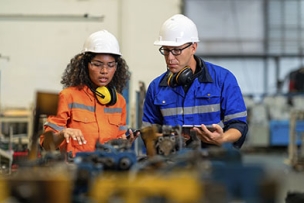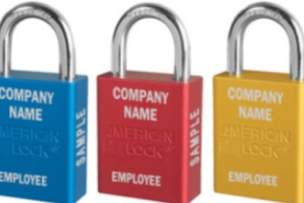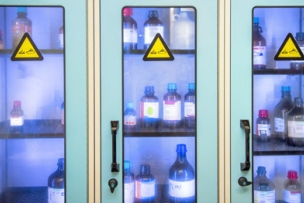A variety of “cool” tools can help employers keep their workers healthy and safe during heat waves.
Whether your workers are out under the hot sun or stuck in a stuffy warehouse, summer temperatures can create dangerous conditions. Are you prepared to help workers beat the heat?
Extreme heat was the third-highest weather-related cause of death in 2019 with 63 fatalities, according to the latest statistical information from the National Weather Service.
The agency’s data also show that, on average, extreme heat is the deadliest type of weather in the U.S., killing 138 people each year, according to the 30-year average from 1990 to 2019.
Who Is Affected By Heat Stress the Most?
Many heat-related injuries and illnesses occur in construction and agriculture, where workers labor unprotected under the hot sun. But they are not the only workers at risk.
“Indoor workplaces with hot conditions may include iron and steel foundries, brick-firing and ceramic plants, glass products facilities, electrical utilities (particularly boiler rooms), bakeries, commercial kitchens, laundries, chemical plants, material handling and distribution warehouses, and many other environments,” OSHA says on its heat stress website. “Outdoor workplaces with work in hot weather and direct sun, such as farm work, construction, oil and gas well operations, landscaping, emergency response operations, and hazardous waste site activities, also increase the risk of heat-related illness in exposed workers.”
Dan Linder, a sales manager at Serco Fans, writing for EHS Today, notes that some people—those who are overweight, older than 65, or have high blood pressure—are more susceptible to heat stress. The type of task being performed is also a factor.
“When you combine high temperatures or high humidity with strenuous physical activity, you are upping the ante for a heat-related illness to occur,” Linder says.
Explore important HEAT STRESS PREVENTION Products & Solutions.
Shutting the plant this summer for maintenance? Get our checklist here, and read “Preventive Maintenance Checklist: Plant Prep for Summer Shutdown.”
What Are OSHA’s Heat Stress Regulations?
The Occupational Safety and Health Administration doesn’t have specific regulations regarding heat stress, but it will cite companies under the general duty clause, which requires employers to keep workplaces free of known safety hazards. The agency offers a variety of heat-related tips and information on its heat stress page, including information on engineering controls, work practices and personal protective equipment.
A 2016 study reviewing OSHA heat enforcement cases in 2012 and 2013 found that employers cited by the agency lacked basic heat prevention steps such as providing water, shade and training, failed to acclimatize workers and did not adjust work/rest proportions when temperatures rose.
According to the study, components of a heat safety program include:
- Establishing a formal heat illness prevention program with a designated, knowledgeable person to implement and manage it
- Monitoring workplace temperature (heat index and wet bulb globe temperature)
- Providing water and encouraging frequent water intake
- Acclimating workers by gradually increasing duration and intensity of work
- Using work/rest cycles
- Training workers on signs and symptoms of heat illness
- Monitoring workers for signs of heat stress
- Planning for emergency response in case of heat illness
Managing Heat Stress: Cooling Vests, Rags, Fans
Sean Moser, a safety specialist with MSC, says there are a variety of tools available for a company’s beat-the-heat toolkit. These could include garments such as cooling vests and cooling rags or pieces of equipment like fans.
“Thermally conditioned clothing might be used for extremely hot conditions,” OSHA says. Examples include garments with a self-contained air conditioner in a backpack or with a compressed air source that feeds cool air through a tube, and jackets with pockets that can be filled with ice or dry ice.
Linder says high-volume, low-speed fans keep air moving and can deliver the equivalent of a 7-to-11-degree decrease in perceived temperature. “The fan also breaks the moisture barrier on a worker’s skin, reducing the perceived temperature,” he explains.
But Moser says hydration is key.
“Water, water and more water is something we preach here,” says Moser, who is based in Texas. Sports drinks can also help keep workers hydrated and restore electrolyte imbalances by adding sodium, he says, and some industrial electrolyte brands, sold only through distributors, restore potassium and other substances that are lost through sweating as well.
However, some drinks should be avoided, Moser says. This includes caffeinated or carbonated beverages like coffee, soda or energy drinks. “They will actually dehydrate you while you’re quenching your thirst,” Moser says. The Centers for Disease Control and Prevention also advises against sugary beverages, and warns that drinks that are very cold can cause stomach cramps.
Cooling ice pops, on the other hand, provide a double benefit in hot weather, Moser says. “They have electrolytes so they’re going to help keep you hydrated, but then the cold of them will actually cool you off.”
Need more training info on heat stress and dehydration? Go deeper. Read “Heat Stress Training: Why Hydration Is Important.”
“Water, water and more water is something we preach here.”
Raising Awareness on Heat Stress and Dehydration
Moser also recommends that manufacturers post urine charts in any kind of bathroom area. The charts help employees determine their level of dehydration based on the color of their urine: Clear means the person is very well hydrated, while brown means they are very poorly hydrated and should seek medical attention.
“That tells without any training or background information how hydrated you are,” Moser says. “It’s a visual representation of what your body is doing.”
Similar charts are designed to alert workers to signs and symptoms of heat stress, from heat cramps to heat stroke (see sidebar). Moser says the related advice could be to drink more water for mild symptoms or to seek medical attention for more serious symptoms.
Moser recommends employers not only pass out water and other hydration aids at the beginning of shifts, but also offer a daily report on the expected temperature and heat index and a quick reminder of heat stress symptoms to watch for and ways to stay safe in the heat.
“You might offer these things (water and cooling aids), but making sure that the employees get the information and are aware of potential problems is also probably as important,” Moser says.
What tools are in your #beattheheat kit?





Talk to Us!
Do you all come out and do on site evaluations and make recommendations about the cooling fans??
35David,
Thank you for contacting MSC Better MRO.
Yes we do have a vendor that can help with this.
Please send me an email with your company name and location and I can work on getting somethiing set up.
My email is paul.cook@mscdirect.com.
Thanks again for connecting with us on Better MRO.
Paul Cook
MSC Safety Specialist.
27Leave a reply
Your email address will not be published. Required fields are marked *